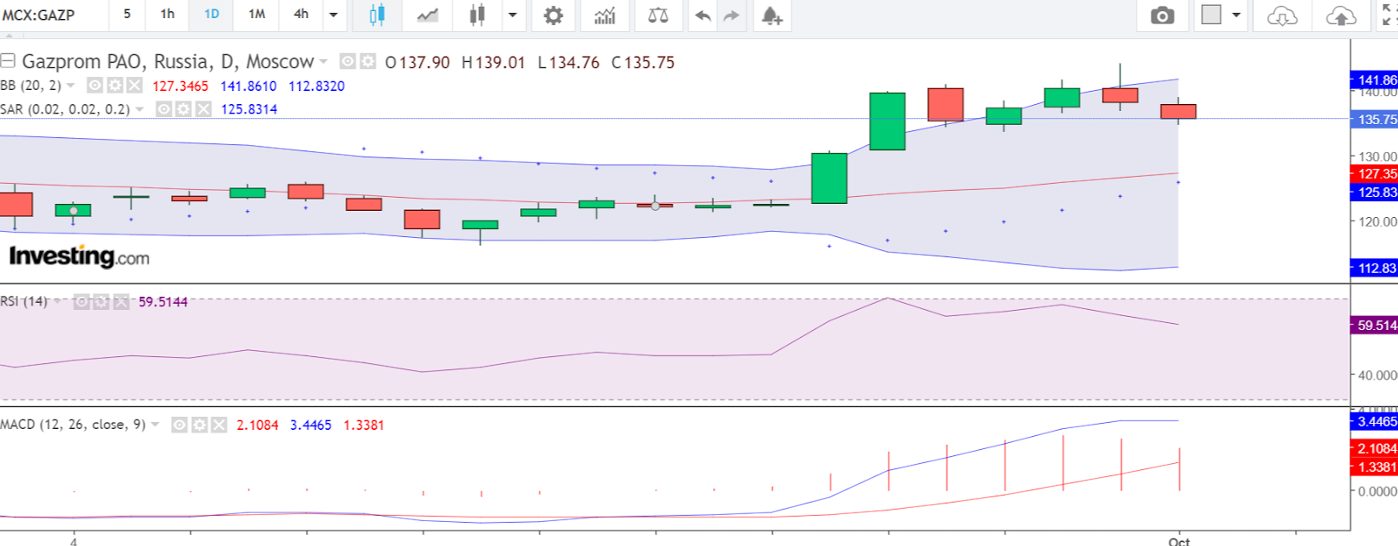CFD Trading in Russia



Contracts for difference (CFDs) are a popular form of derivative trading in Russia. They give active traders the flexibility to speculate on upward and downward market movements without owning underlying assets.
CFDs gained popularity in Russia in the 2000s, but the Central Bank of Russia (CBR) has since tightened its grip on the market. For example, in 2021, it published a list of over 1,800 unauthorized CFD providers.
Interested in CFD trading in Russia? This guide for beginners unpacks the essentials.
Quick Introduction
- CFDs are a flexible trading product that allows you to speculate on the price of an underlying asset, such as shares in Sberbank.
- You exchange the difference in the price between the opening and closing of a position, entering a buy position if you think it will rise and a sell position if you think it will fall.
- Leverage is a cornerstone of CFDs, multiplying trading results for a modest investment. This necessitates strict risk management through stop losses and sensible position sizing.
- CFD trading is regulated by the Central Bank of Russia (CBR). However, the landscape is complicated – in 2022, some CFDs in Russian assets were impacted by geopolitical events.
Best CFD Brokers in Russia
Following in-depth tests, we've zeroed in on these 4 providers as the best for CFD traders in Russia:
How Does CFD Trading Work?
CFDs provide an opportunity to trade financial markets without the added capital investment needed to own the actual asset. Instead, you predict whether the price of an asset will increase or decrease.
One of the most appealing aspects of CFD trading is leverage. This allows you to open large positions while only committing a fraction of the total value, known as the margin.
Here’s a potential trading scenario to show you how it works…
Let’s say you believe that the Russia Stock Market Index, MOEX, will rise, so you enter a CFD buy position. Each contract is valued at RUB 2,800 (roughly the current index price), and your brokerage requires a 5% margin. To take a position on 10 contracts, your margin requirement would be 1,400 (RUB 2,800 per contract x 10 contracts x 5%).
If the MOEX rises to RUB 2,900, the price increase would yield RUB 100 per contract. By closing your position, you would realise a total profit of RUB 1,000 (10 contracts x RUB 100), excluding any fees your broker charges.
Conversely, if the index falls to RUB 2,700, you would lose RUB 1,000, illustrating the inherent risks associated with CFD trading; losses and gains are magnified.
Before starting CFD trading, it’s essential to understand the margin requirements and risks.For beginners new to this type of trading, a demo account is an excellent introduction to practice strategies before risking Russian Rubles.
What Can I Trade?
CFDs provide a wealth of trading opportunities in Russia across various financial markets, both domestically and internationally:
- Stock CFDs – Speculate on individual Russian company stocks, like PJSC Gazprom, a Russian majority state-owned multinational energy corporation. PJSC Rosneft Oil Company, a Russian integrated energy company, and PJSC Sberbank, a Russian majority state-owned banking and financial services company. You can trade these highly liquid/capitalized firms as CFDs without purchasing the shares.
- Index CFDs – The MOEX is the benchmark index of about 219 firms. Traders often choose CFDs to speculate on the Russian market’s overall performance rather than trade individual shares. Alternatively, you could explore CFDs on major global indices like the Dow Jones or the NASDAQ.
- Forex CFDs – The Russian Ruble (RUB) is actively traded in the foreign exchange market. Where available, you can speculate on popular currency pairs, including USD/RUB and EUR/RUB. These pairs provide liquidity and opportunities for day traders.
- Commodity CFDs – Trade Russia’s key export commodities such as oil, natural gas and wheat. This allows you to speculate on the price movements of these vital resources that significantly impact the Russian and global economy.
- Crypto CFDs – Retail investors may be able to trade cryptocurrency CFDs like Bitcoin and Ethereum, giving them access to large price swings in a high-risk market.
Is CFD Trading Legal In Russia?
CFD trading is legal in Russia but subject to regulation by the Central Bank of Russia (CBR).
Due to the high-risk nature of these products, Russian authorities implement strict measures to protect investors. Traders must ensure they deal with regulated brokers based in Russia or international brokers that comply with Russian regulations.
Due to the leveraged nature of CFD trading and the potential for significant losses, the CBR emphasizes the importance of consumer protection. This includes enforcing certain restrictions on leverage and ensuring firms provide adequate risk disclosures to clients.
Marketing and promotion of high-risk products like CFDs are also closely monitored to prevent misleading claims.
Is CFD Trading Taxed In Russia?
Under Russian tax law, profits generated from CFD trading may be subject to personal income tax. Rates begin at 13% for incomes up to 2.4 million rubles, climbing to a top 22% rate for those posting incomes in excess of 50 million rubles.
CFD profits are capital gains, and the income tax is applied to the net profit after accounting for losses, commissions, and other trading-related expenses.
Russian traders are responsible for self-reporting their CFD profits in annual tax returns. If using an international broker, the firm might not automatically report your trades to the Russian authorities, so keeping detailed records is essential. If you trade through a regulated Russian broker, they may withhold taxes at the source.
Russia has treaties that prevent double taxation on the same income with many countries. Therefore, you may be able to claim foreign tax credits when filing your tax return in Russia.
Consult with a tax professional or financial advisor to ensure compliance with Russian tax laws and optimize your tax strategies regarding CFD trading.
An Example Trade
Let’s bring this all together in a firsthand example of a CFD trade on a Russian stock.
Background
I’m focusing on PJSC Gazprom (GAZP), a Russian majority state-owned multinational energy corporation headquartered in Saint Petersburg. In January 2022, Gazprom displaced Sberbank as the largest company in Russia by market capitalization.
Gazprom is active in every area of the gas industry: exploration and production, refining, transport, distribution and marketing, and power generation.
It has proven reserves of 35.1 trillion cubic meters of gas. Gazprom is also a large oil producer through its subsidiary Gazprom Neft, producing about 41 million tons of oil with reserves of 2 billion tons.
Fundamental Analysis
You must do homework on a quoted firm’s metrics if you trade it as a CFD share.
At the time of this trade, Gazprom had:
- A market cap of RUB 3.22T
- The P/E (price to equity) ratio was 37.62
- The 52W range was 110-173
- The net revenue was approximately $150b
- Its EPS (earnings per share) was 3.63
You must also scope the financial news sources, your economic calendar, and analyst sentiment for any information to help you build a sentiment profile that will justify your long or short decision. But remember that even the best analysts at the largest Wall Street firms often get it wrong.
Technical Analysis
Like many experienced traders, I’ve experimented with every technical indicator and various combinations. After years of trial and error, I eventually favored using a combination that covers all bases.
To avoid duplication with indicators, it’s advisable to choose one from each of these four key groups: trend-following, momentum, volatility, and volume indicators.
I choose indicators that, once aligned, will instruct me to enter and exit the market and modify my trailing stop-loss order.The MACD, Bollinger Bands, PSAR and RSI combined with the smoothed Heikin Ashi candlestick patterns provide me with an excellent overview of any market from a technical analysis standpoint.
Technical analysis (TA) isn’t infallible. Still, it gives you a reason to get in and out, and most importantly, it delivers obvious price points for placing market orders, such as stop-loss and limit-profits.
Also, by using TA, you indirectly develop discipline over position size and your overall risk per trade.
D1 Timeframe
Looking at the daily (D1) timeframe below, we can establish the following information:
- The MACD moving averages crossed as the histogram moved from bearish to bullish.
- The RSI reading rose above the median 50 level and eventually entered the 70 zone, suggesting potentially overbought conditions, giving a reason to close the trade.
- The BB indicator expanded, price breached the 20 EMA, and the PSAR appeared below price, indicating a change in sentiment.

Once the technical indicators aligned, the HA candle formation mirrored this evaluation, suggesting a bullish, solid sentiment. The full, bullish HA daily bars are closed with small shadows/wicks.
Based on my technical and fundamental analysis, I am comfortable being bullish about GAZP. My long deal ticket contained the following instructions:
- Market entry order – 130.00
- Stop-loss order – 118.00
- Profit limit-order. 140.00
Bottom Line
CFD trading in Russia is legal and regulated, allowing you to speculate on price movements of various financial markets without owning the underlying asset.
However, you must be aware of the risks due to leverage, which can amplify profits and losses. CFD trading is also subject to taxation, with profits taxed at the standard personal income tax rate of 13% for residents.
Due to the complexities of regulation, taxation, and market risks, Russian traders should use regulated brokers and practice careful risk management when dealing with CFDs.
To get moving, turn to DayTrading.com’s selection of the top brokers for day trading CFDs.
Recommended Reading
Article Sources
- Central Bank of Russia (CBR)
- Russia Stock Market Index, MOEX - Investing.com
- PJSC Gazprom
- PJSC Rosneft Oil Company
- PJSC Sberbank
- Russia Personal Income Tax - Trading Economics
- List of Illegal Trading Providers in Russia - Central Bank of Russia
The writing and editorial team at DayTrading.com use credible sources to support their work. These include government agencies, white papers, research institutes, and engagement with industry professionals. Content is written free from bias and is fact-checked where appropriate. Learn more about why you can trust DayTrading.com



